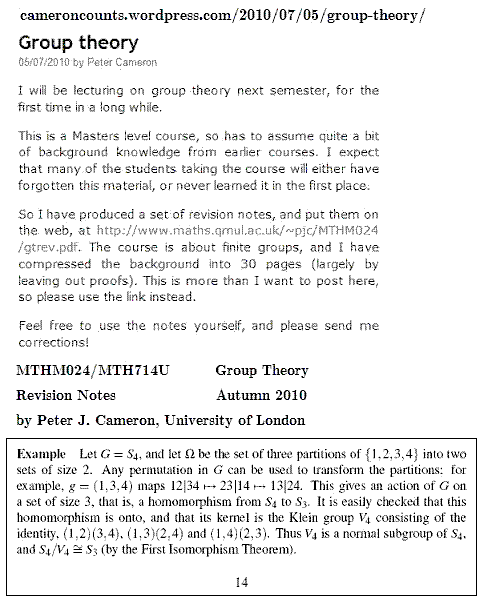Geometry Simplified

(a projective space)
The above finite projective space
is the simplest nontrivial example
of a Galois geometry (i.e., a finite
geometry with coordinates in a
finite (that is, Galois) field.)
The vertical (Euclidean) line represents a
(Galois) point, as does the horizontal line
and also the vertical-and-horizontal
cross that represents the first two points'
binary sum (i.e., symmetric difference,
if the lines are regarded as sets).
Homogeneous coordinates for the
points of this line —
(1,0), (0,1), (1,1).
Here 0 and 1 stand for the elements
of the two-element Galois field GF(2).
The 3-point line is the projective space
corresponding to the affine space
(a plane, not a line) with four points —

(an affine space)
The (Galois) points of this affine plane are
not the single and combined (Euclidean)
line segments that play the role of
points in the 3-point projective line,
but rather the four subsquares
that the line segments separate.
For further details, see Galois Geometry.
There are, of course, also the trivial
two-point affine space and the corresponding
trivial one-point projective space —

Here again, the points of the affine space are
represented by squares, and the point of the
projective space is represented by a line segment
separating the affine-space squares.




